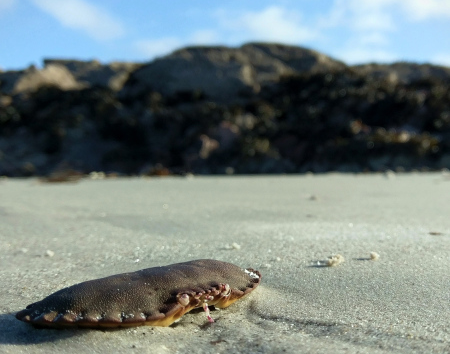As someone who is self-taught on the Irish Tenor Banjo, and as a guitarist primarily, I have only recently started thinking about the heritage of this instrument, and the story of its seemingly unlikely voyage to Ireland. Since coming to RCS, I have frequently wondered how such a quintessentially American-seeming instrument has such a strong place in Irish Traditional Music.

Early History:
“To music scholars, the banjo is a “folk lute,” one of many such instruments with a drum-like soundbox. Others of the breed include the Persian tar and the Japanese shamisen. The banjo’s origins, however, are in the American south, where slaves crafted instruments like those they remembered from their native Africa.”
– Don Meade, “The Irish Tenor Banjo”
The banjo has a long and diverse history in the Americas, where it was developed from relatively simple instruments with animal hide stretched across a hollowed-out gourd, to more refined ones with a wooden frame, much like the banjos of today. Throughout this history, the standard set up of strings was similar to modern five-stringed versions, where a high-pitched string is attached to the side of the neck with a single peg, and others are attached using “violin-style” tuning pegs at the headstock.
Dropping the Fifth String:
It is speculated that John Farris of Hartford, Connecticut (1826-1911) was the first instrument maker to produce a four string ‘Tenor’ banjo similar to those popular in Ireland today. His original designs for an instrument of this type (first recorded in 1885) depicted 8-string ‘Banjolins’, which were soon adapted to 4-string models including the tenor version. These new designs allowed the banjo’s stylistic horizons to broaden, both in the world of melody and accompaniment.
Meanwhile in Ireland…
Travelling minstrel bands introduced fretless, five-string banjos to Ireland as mostly accompaniment instruments. The first known instance of this is in 1844, when the Virginia Minstrels – a group of “blacked-up” musicians that became highly successful in the USA’s south during this time period – travelled to Ireland for a small tour consisting of performances in Dublin, Cork and Belfast. While these musicians claimed to be playing authentic music from the slave plantations, their white, partially Irish heritage produced a fairly Celtic sound.
Since the presence of the banjo was already somewhat established in Ireland by these minstrel bands, by the time four string models became more mainstream in the early 1900’s it seemed a fairly logical next step for melody players to start playing Trad tunes written for the fiddle on the banjo. However, it was not until the 1960’s that the four string banjo began to be taken seriously as a melodic instrument. Before then, the original ‘minstrel’-style banjos, as well as many other resonator-based variants, still appeared quite frequently, especially in dance bands. Since there was no electronic amplification, the resonator of the banjo, especially after the addition of steel strings, was great for making sure it was heard over the sound of a noisy dance floor, or a bustling street. This phenomenon occurred first in the USA, but because of the frequent movement of people and exchange of culture between Ireland and America, the trend soon took off across the pond. The four string banjo also surged in early Jazz music, where it would commonly be used for strumming chords.
“In 1916, New York resident James Wheeler, about whom little else is known, became the first Irish tenor banjo recording artist when he accompanied button accordionist Eddie Herborn on the earliest Irish traditional music disc ever made.”
– Don Meade, “The Irish Tenor Banjo”

During the later half of the 1920’s, a few tenor banjo players in Ireland began to break away from the rhythmic strumming of their dance-band accompaniment styles to pick out jigs and reels, often adding embellishments such as triplets. One of the most notable examples from this era is the “Flanagan Brothers”, where Mike Flanagan played Irish melodies on the tenor banjo, while his brothers Joe and Lou added tunes on button accordion and banjo/guitar accompaniment.

After the rise of “The Flanagan Brothers”, and many more pre-WWII tenor banjo players such as Neil Nolan, Michael Gaffney and Bill Whelan, more and more Trad musicians began to recognise the style of banjo as a valid, exciting new form of entertainment. When the folk revival of the 1960’s rolled around, the Irish Tenor Banjo was in prime position to take its place as one of the most popular tune-playing instruments in Irish Trad. Now, thanks to accessibility of information and the mingling of cultures and musical styles, the Tenor Banjo is making its way to Scotland on the backs of curious, ambitious Trad musicians such as Eamonn Coyne, Ewen McPherson, and hopefully myself.
References:
Article:
MEADE, Don; The Irish Tenor Banjo – accessed 13/12/2018
http://blarneystar.com/BANJO_030912X.pdf
Website:
Author Unknown; “Irish Banjo History” – Accessed 13/12/2018
http://www.celtic-instruments.com/stringed/banjos/history.html
Website:
Wikipedia; “Flanagan Brothers” – accessed 13/12/2018
https://en.wikipedia.org/wiki/Flanagan_Brothers#Initial_success
YouTube:
Steve M (13/03/2015); “Rakes of Clonnel/Cavan Reel by the Flanagan Brothers on Vocalion 14638 78 RPM
YouTube:
terrybellmusician; “Minstrel Banjo and Irish Bouzouki / Little Beggarman”
Hope ye enjoyed,
-L.
